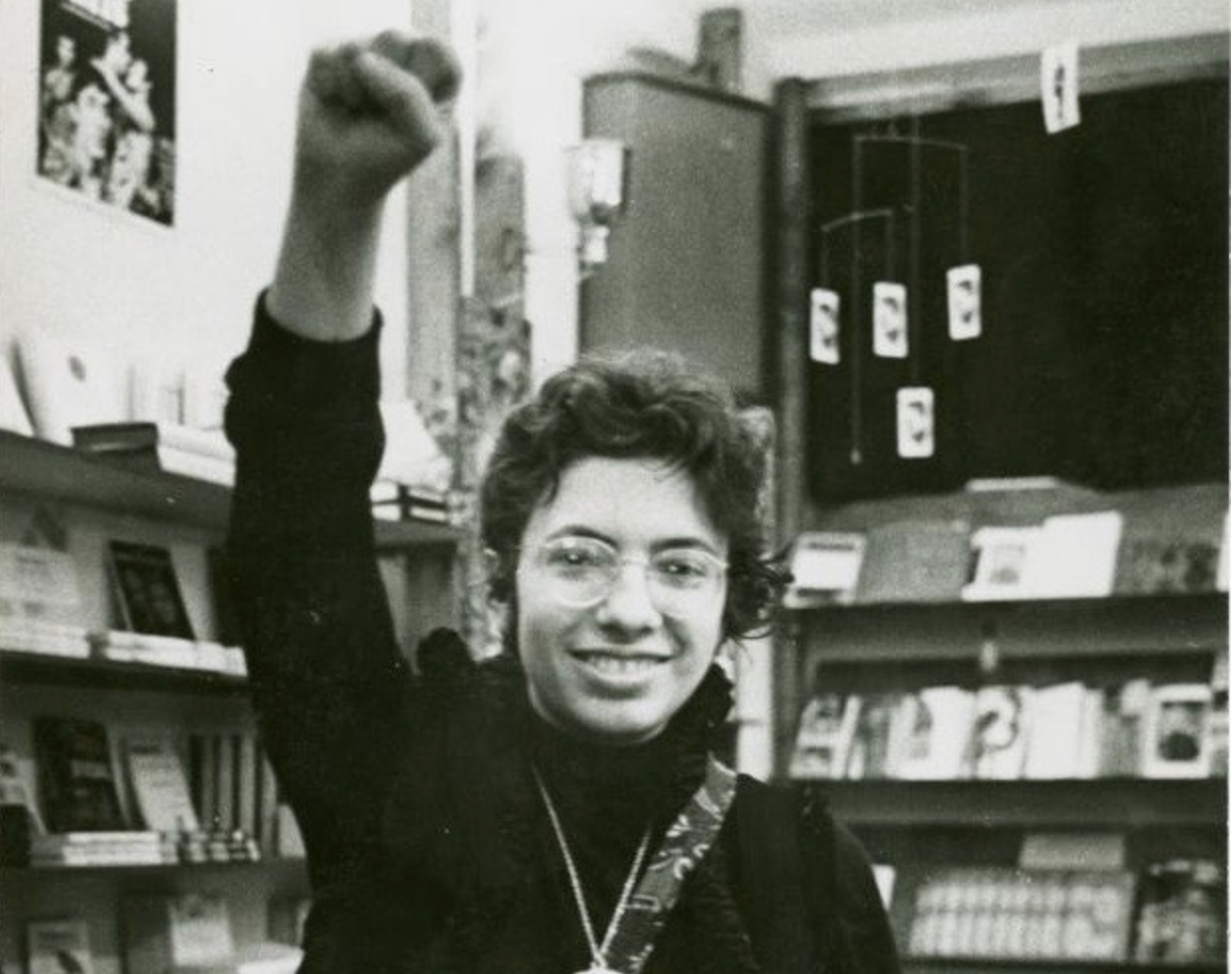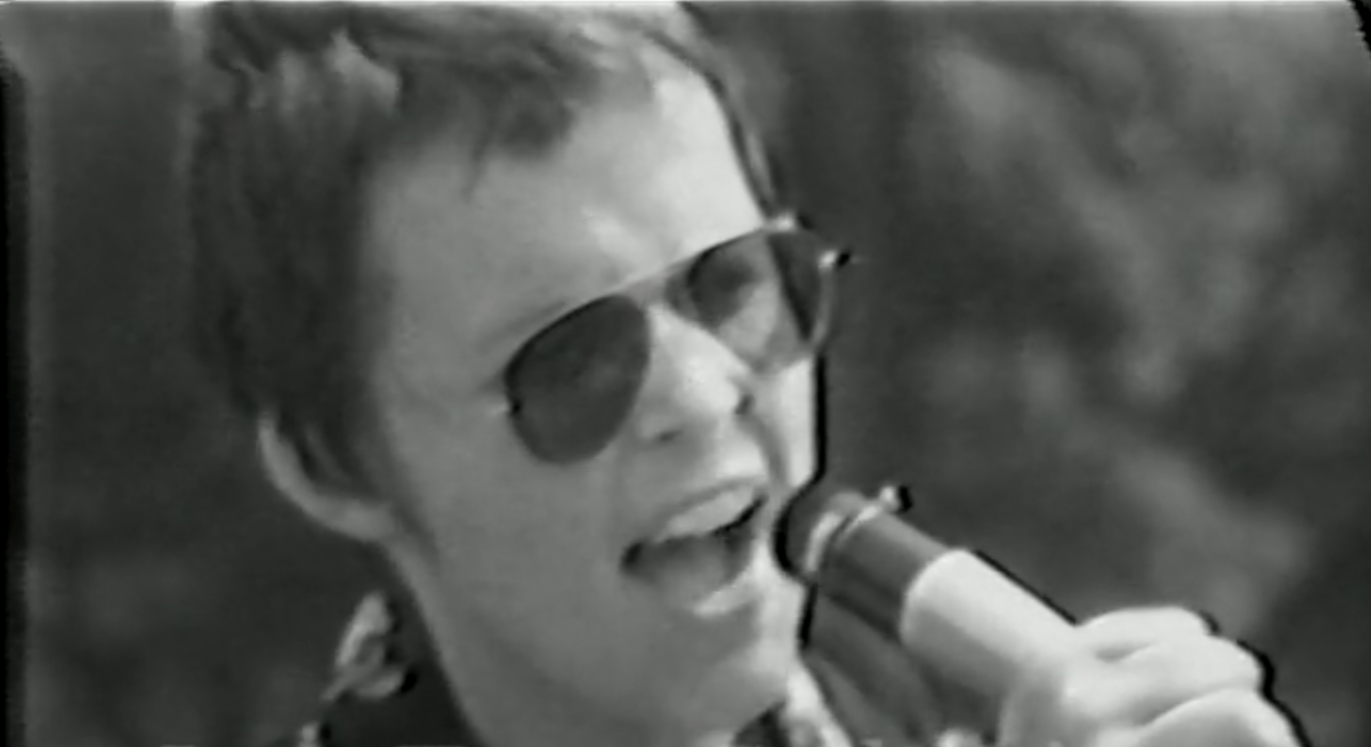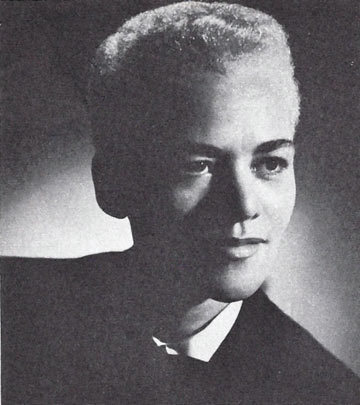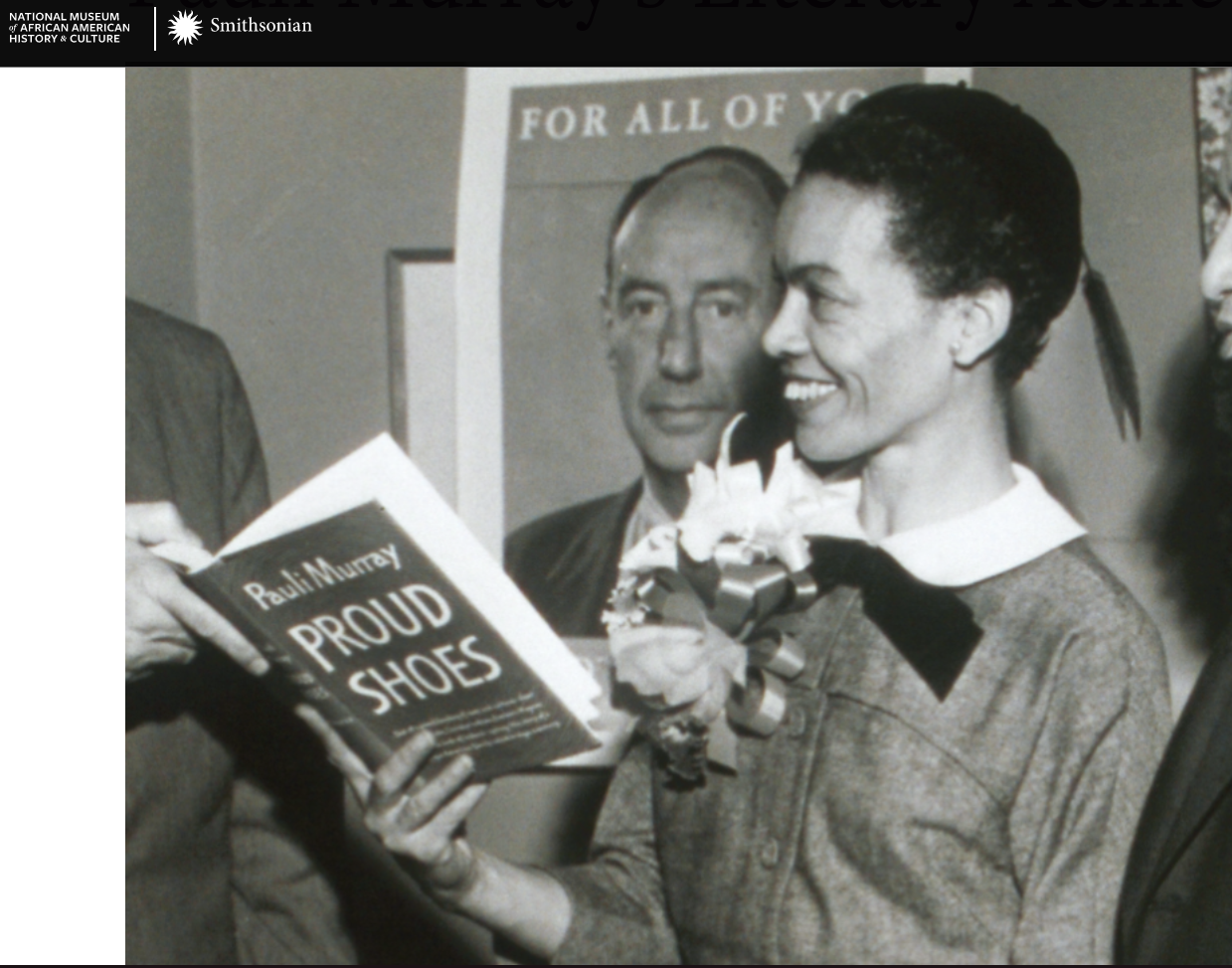Martha Shelley doesn’t care how people remember her. What she cares about is doing what’s right, right now.
Born in Brooklyn, in 1943, Shelley grew up being taught — in school, and everywhere around her — that homosexuality was abnormal. She set out to change this.
While she saw the need for lesbian-only spaces, she also saw the need for a united front to shift the negative perspective around same-sex attraction. She was a public spokesperson for the Daughters of Bilitis (DOB), the first lesbian civil rights organization in the US, wrote for The Ladder (DOB‘s publication), and she was also an ally to the Black Panthers and Young Lords in the 60s and 70s.

It was with the DOB that she set out to propose a unified protest march after she saw the Stonewall Riots take place — a revolution started by Stormé DeLarverie, a Black butch lesbian, who threw the first punch and gave a call to arms.
In a recent interview with Bev Jackson, Shelley says that she was showing a couple of lesbians from Boston around the area, when they saw the riot at Stonewall going down. The two women from Boston, who were looking to start a Boston chapter of the DOB, were taken aback by the riot, but Shelley, who was often involved in anti-war riots, assured them it was no big deal. However when she found out it was a gay riot, she realized it was a big deal and called her higher up at the DOB, right away. She said, “We have to have a protest march.”
She was told to get in touch with the Mattachine Society, one of the first gay rights organizations in the US, so she could propose the idea of forming a protest march. She was invited to a Mattachine Society meeting at Town Hall to make the proposal, and from there, the Gay Liberation Front would be formed.
“We’re sitting around drinking beer, and someone said the name ‘Gay Liberation Front’— I have no idea who said that—and I got very excited and I started pounding my hand on the table, yelling, ‘That’s it, that’s it, we’re the Gay Liberation Front!'”
—Martha Shelley

In a 1994 interview, with Persona Productions, Shelley talks about the union created between lesbians and gay men, stating, “We [lesbians] certainly had a much stronger understanding of sexism, because… it impacted on our lives from the day we were born. A lot of the guys had an understanding of it, just because being a gay guy meant you got treated as a woman… and there were guys who wanted to be treated more as men… but there were also an awful lot of guys who were listening to what women were going through and saying, ‘Hey this has to be changed too.'”
Change needed to happen, and Shelley was among the lesbians and gay men who organized and did all the ground work to make that change happen.
“The March happened exactly one month after the Stonewall Riots began, and we marched around the village, we ended up in Christopher park, right across the street from the Stonewall Inn… Marty Robinson, of the Mattachine Society, jumped up and made a speech. Then I jumped up and made a speech, and then at the end of it, I said, looking out at all these faces, ‘Okay, that’s it. We’re not going to start another riot here today. We need to go home in peace, but this is not the end. This is just the beginning. We will be back.'”
— Martha Shelley

In her 1989 interview, on record with the Lesbian Herstory Archives, Shelley talks about what it was like to be out in the world as a lesbian. She says she didn’t even consider coming out to her parents when she first figured out she was gay, and that they might’ve “put her in a mental institution.” She adds her mother would’ve been “happy to put her in a mental institution.”
She grew up in a Jewish family, and, in a 2019 interview, with The Stonewall Oral History Project, she says she knew she was “different from pretty early on.” In elementary school, Shelley says when the kids would draw pictures, “The little boys would all draw pictures of planes, shooting, you know, aircraft guns, submarines… the girls would draw pictures of what was supposedly themselves, in wedding dresses, and they all looked exactly alike, these bell shaped skirts… and heart shaped, with low cleavage… and it was all very stereotypical… I would draw pictures of undersea scenes, or dessert scenes with cactuses, something different.”

Shelly was 17 when she joined a class, advertised as the “First all-women’s Judo class,” on 51st, at the YMCA. She had to say she was 18 to get in. And it was at this time she realized she was a lesbian. She met a married woman in the class who happened to go to the same City College as her, and became romantically involved with her. About the realization she was a lesbian, she says, “It was a very profound shaky thing… I knew it. There was no escaping it.”
In the 2020 interview with Jackson, she explains what it was like to come into young adulthood at a time when it was illegal to have sex with a member of your own sex everywhere in the US, except, by fluke, in Illinois. She says, “In New York City, where I was growing up, I never even heard about gay people until I was a teenager and was starting to read stuff in, like, abnormal psych classes, and things like that, and it was all very weird. Basically Freudianism, and making us all seem like we were some kind of diseased creatures.”

Shelley reveals how she eventually came to discover the Judo class she’d been taking was “half gay,” in her 1989 interview, and says they were “mostly jock types” in the class. Shelley was a self-described “book-worm,” and says she didn’t do well in the bars, because she wasn’t “cute,” or “skinny enough,” and wasn’t good at flirting. She explains that she did better picking up women when she could talk to them. The bars were also Mafia-run, so there was always the possibility of a raid where arrests would be made.
“You had to go to these Mafia-run bars in New York City, where you paid extra for a watered-down drink, for the privilege of associating with other gay people. The windows were blocked off, so you had to know where you were going. And then there was an inner room, in one of these bars, where you could dance with other women. And you had to pay extra to get into the inner room, because it was illegal to dance close with members of your own sex.”
— Martha Shelley

Shelley also read through various lesbian books, looking for alternate ways to meet women, and that’s how she discovered the DOB in 1967. And as they say, the rest is history… Or is it?
If only…
Lesbian erasure has long been an issue, but now, to boot, over the last several years, mainstream media has made gay history into a work of fiction.
Among many things, the mainstream has spent the last several years crediting Johnson and Rivera for starting the Riots at Stonewall and founding Pride.
“New York City is about to build statues in honor of Sylvia Rivera and Marsha P. Johnson,” Shelley says, in her 2020 interview, “who, by the way, did a lot of good work for Street Queens, for young people who were out on the street… but they were not the founders, they did not start the Stonewall riots… and all of a sudden they are the deities…”
There’s also the fact that Malcolm, aka Marsha Johnson, was a self-proclaimed gay man, and drag queen, up until death in 1992. Johnson deserves to be honored with respect and integrity, not rebranded as a “woman,” postmortem. The statues were touted in the media as a step toward fixing the “gender gap” when it comes to statues in NYC.
Of the monuments being erected, The Guardian wrote, “New York has only five monuments of women but over 150 statues of men. Their goal is to boost the ratio to 50% of women monuments,” while The New York Times reported that this move would be “part of the city’s effort to fix a glaring gender gap in public art.” Gillian Branstetter, of the National Center for Transgender Equality, said, “We hope this monument is a lasting tribute to two women…”

“The city of New York has not built any statues to any of us lesbians or any of the gay men who were involved in Gay Liberation Front. Just those two are the heroes,” Shelley pointed out, in her interview with Jackson.
Shelley also sets the record straight regarding Stormé — “Stormé DeLarverie was a drag butch” lesbian.
Why is the lesbian community constantly having to point this out? Because Stormé (who, reminder, started the Stonewall Revolution and isn’t getting a statue) has been obsessively rewritten in the mainstream as “trans” (as have many historical lesbian figures), postmortem.

There’s that pesky erasure Shelley’s talking about. Back then, “transvestite” was used as a synonym for drag queen or drag king. Nowadays it’s often strategically conflated with words like “transsexual” or “transgender,” or the new popular abbreviation of transsexual and transgender, trans, which holds a very different meaning, but has been conflated to create a history.
As yet, hundreds of other words sharing the prefix “trans,” such as transportation, transcendental, translucent and transformation, have not yet been conflated, and are still used transparently, rather than reduced to their shared prefix. If every lesbian who’s done drag is to be disingenuously labelled as “trans,” even I (drag name, Romeo), would fall under that category. If every ‘non-conforming’ lesbian is to be labelled “trans,” as we’re seeing happen to lesbian figures postmortem, who among us, pray do tell, isn’t “trans”?

As Shelley was entering adulthood, she says the lesbians were either dressed “very butch or very femme.” In her interview with The Stonewall Oral History Project, she says the DOB, was also butch femme in fashion, “more or less, but it was not as hard edge.” She explains how the style varied slightly among groups, based on socioeconomic status.
As far as Shelly’s style, she was into wearing “blue jeans and a plaid shirt.” While nowadays every lesbian seems to be in possession of an impressive collection of plaid shirts and jeans, this was a different time, when being categorically ‘butch’ or ‘cross dressing,’ or simply refusing to femme things up enough (for the satisfaction and comfort of men), could lead to jail time — but that didn’t stop lesbians from railing against the patriarchy and flipping off ‘gender’ rules, limitations and expectations. Lesbians are notorious for refusing to conform to prescribed ‘norms.’
In a 1983 interview with Len Evans, Rusty Brown, a self-described “butch lesbian,” said, “I have been arrested in New York more times than I have fingers and toes, for wearing pants and a shirt.” At the end of World War II, Rusty Brown, like many others, ‘crossed-dressed’ and ‘passed’ (as a man) after losing her job as a machinist, so she could find work. With men back from war, women were no longer considered necessary. She borrowed her grandfather’s name and passed so she could get a factory job. She was also able to make money working as a NY drag king.
Rebranding lesbians postmortem is not only dishonest, it erases our struggle, sex and sexuality-based discrimination, and our truth, our stories, our history.
A few people have asked, so here’s a thread:
— JD Robertson جوليا🍥 (@JuliaDRobertson) December 9, 2019
Stormé, a butch lesbian, died 5 yrs ago. She was an integral part of the NY lesbian community, someone who started a revolution. SHE went by SHE & there’s no evidence of Stormé saying her “chosen pronoun” is “he.”
On the contrary…
About this new narrative, Shelley says, “the historical record has been altered… and those of us who were there at the time are feeling kind of distressed about changing the history in New York City.”
For those who were there, those who are still with us, they’re not only watching as credit is redirected, they’re watching a new generation being fed propaganda that’s telling them they owe their gratitude to “transwomen,” like Johnson and Rivera, for giving gay men and lesbians their rights.
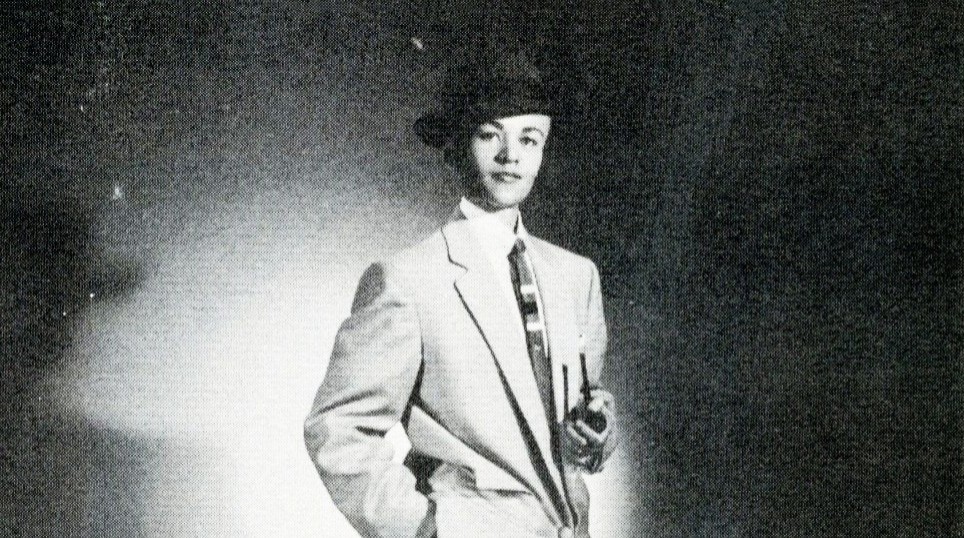
As to the claim that trans people started the riots at Stonewall and were the founders of Pride, Shelly says, “No. That’s complete BS.” She explains that “drag queens,” who might’ve “called themselves transvestites,” were at Stonewall.
Having been so deeply involved in the community at the time, Shelley explains, “Nobody that we knew was transsexual. There were a couple of cases — like Christine Jorgensen, who had undergone the surgery overseas — but it was not a big thing then. And nobody called themselves that till later on.”
But that’s not what young people are being taught now, through mainstream, social media, or even through school curriculum. Now that our history is finally allowed to be taught in the school curriculum, it’s a web of reinvention. It doesn’t honor the people who were on the frontline, rather rebrands them, or has them watching from the sidelines.

“We’re going sort of backwards, in terms of the idea of what it means to be male or female, or gay, and there’s what they call lesbian erasure — The erasing of lesbians, and lesbian contributions from the history.”
—Martha Shelley
What few pages lesbians were allotted in the his-story books, are being torn out, ripped to bits, and buried. Seems the only time lesbians are unearthed these days, is to bolster the ongoing narrative: That indeed, we really were men after all — A narrative the mainstream media has been aggressively pushing forever.
When our history is hidden, our she-roes rewritten as “he”-roes, it’s easy to see why things have been going as they have. It’s easy to understand the impact, that losing our voice, losing our ability to pass on history, has had, and why lesbians are feeling so much distress about silencing, censorship, and erasure.
Shelley and others, are coming forward to set the historical record straight. They’ve stepped up to defend truth and integrity. They can tell us about the way homosexuality was stigmatized, the activism that took place, the bureaucratic red tape they had to cut through, and how they went about setting up new places to meet. They can explain why lesbian-only events were created (eerily mirroring what’s happening right now).
“We [the Gay Liberation Front] started holding dances. Then the women decided to hold separate dances, because… straight men would come in and pretend to be gay, and then start putting their hands on the lesbians. And the gay guys would be staring into each other’s eyes and not paying any attention, whatsoever, so it felt unsafe. Once we started having lesbian dances, without that, felt a lot better for us. Although one time a couple of Mafia guys came in, and were threatening us, because we were taking away the money from their bars. And we didn’t back down. We kept doing what we were doing.”
— Martha Shelley

They can explain the history of the word “lesbian,” so we see how the animosity, despite so much effort, carries through from generation to generation. “There were a lot of women in the women’s movement who were scared of the term lesbian,” Shelley says, “because if you were asking for women’s rights, you got dismissed as though ‘it’s just a bunch of man-hating dykes’…”
While not much has changed on that particular front, the lesbians who came before us did a lot to set up spaces, publications, and the basic human rights we have. And for a short while there, lesbians were becoming visible and submerging in our own culture.
Watching them step back up, sparks hope — That the blip of acceptance in our history, which fell sometime between the late 90s and the early 2000s, might someday be something we’ll experience again. Many of us got to experience the world that the founders laid the groundwork to create, a time where we were allowed (legally) to have autonomy, a time when we could name and define — without shame — our sexual boundaries with Pride.
Our spaces have now been mostly shut down (less that a handful remaining in the US), the publications, for the most part, gone or infiltrated, but as the founders start to see what’s been going on, and speak up, a glimmer of optimism grows. Listening to their stories inspires us to keep going, get our grass-roots ever-more organized, plan that next underground meeting, rock the t-shirts.
“A bunch of us took over the second Congress to Unite Women meeting … we showed up with t-shirts underneath our regular shirts that said ‘Lavender Menace,’ because that’s what Betty Friedan had called us (she was very homophobic). And then one of us went behind the auditorium, closed all the lights… When the lights were turned back on again we had taken off our outer shirts and we’re standing there with ‘Lavender Menace’ t-shirts on, and some of us had put posters on the walls that said things like, ‘Take a lesbian to lunch,’ ‘Lavender Jane loves you,’ and just humorous stuff.”
— Martha Shelley
Again, I can neither confirm nor deny that my wife & I are part of some super secret lesbian Illuminati, but I do wanna thank @FredSargeant for these awesome T-shirts… And we’ll see you all at the game on Sunday ⚾️ pic.twitter.com/z8W9uMzmie
— JD Robertson جوليا🍥 (@JuliaDRobertson) August 19, 2020
In 2020, Shelley says, “I think we need to keep fighting for lesbian rights, for women’s rights. We also have to deal with, in this country at least, a tremendous racism… “
Growing up in the projects, in the West Bronx, or what she calls the “middle income projects,” in her interview with The Stonewall Oral History Project, she says her neighbors were working class, “White, Puerto Rican, and Black.” In her home, there were three different languages spoken — Yiddish, Spanish (Cuban) and English. As a kid reading about the Civil Rights Movement, she was horrified thinking about her best friend Lynn, who was Black, knowing, “they could be doing this to her.”
In her interview with Jackson, she says, “the overriding issue, of the time, beyond our gay rights, women’s rights, anything, is climate change, because if we have a burnt-up planet, none of our rights is gonna mean anything!” She says, “We’ve killed off the bugs. We’ve killed off a third of the birds,” and connects the issue of climate change to economic inequality.
“In this country, three individuals own as much as half of the rest of the nation which means they control the whole show…”
—Martha Shelley
When asked if she thinks she’ll be remembered as a rebel, Shelley says, “I don’t care how I’m remembered… what I care about is what can I do now to make this a better world.” Her advice to young lesbians growing up today — “you’re going to be afraid, but you can’t let fear stop you… read and learn.” She warns that we shouldn’t trust the leaders, “the presidents, kings, and so on” and emphasizes how important it is to “think for yourself.“
جوليا ديانا — Julia Diana Robertson, is a an award-winning author, journalist, and Senior Editor at The Velvet Chronicle.


